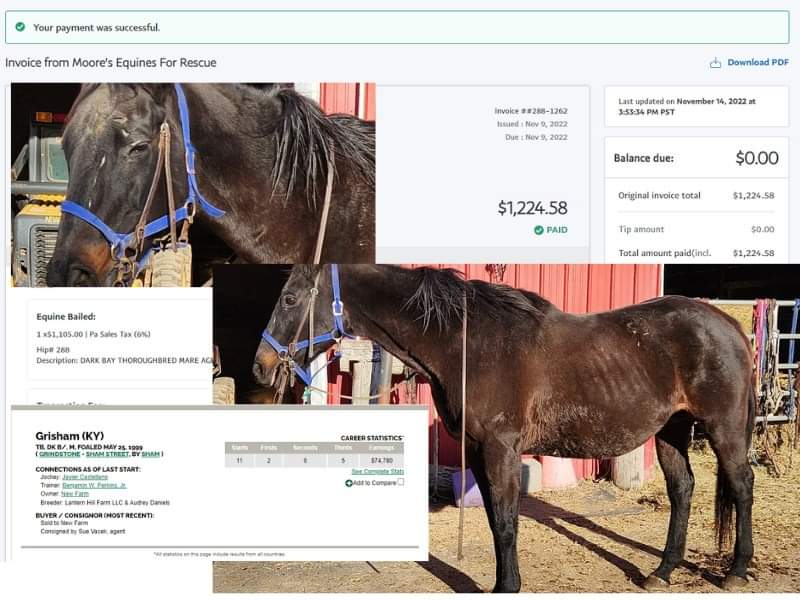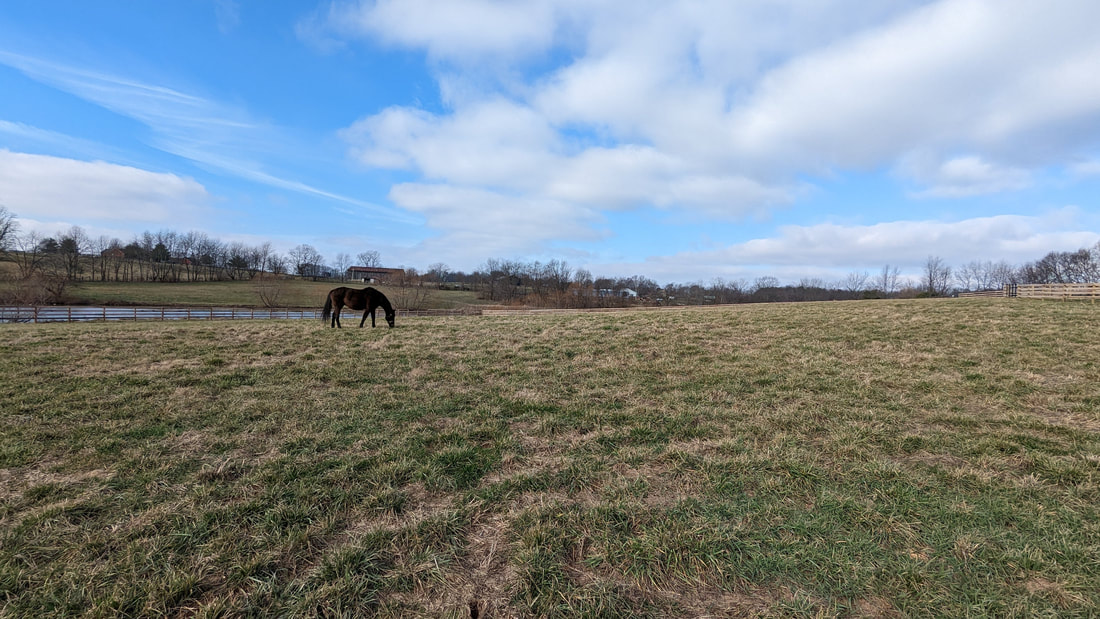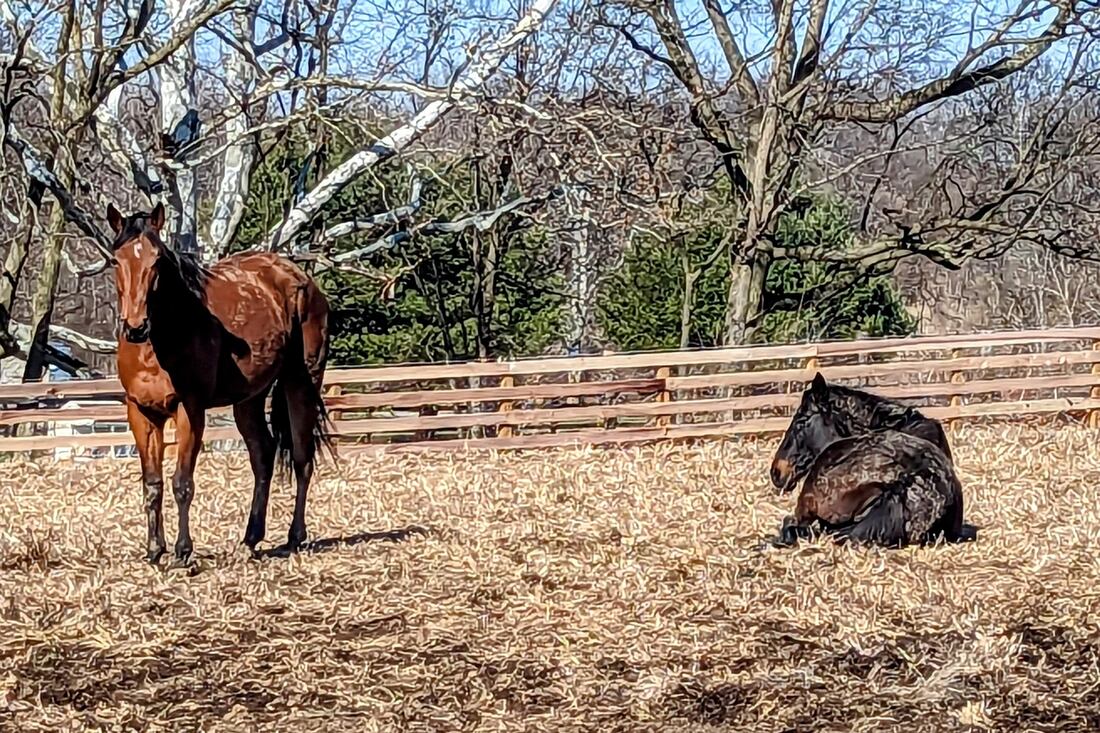|
Before Monday, November 14, 2022 I swore I would NEVER bail a horse from a feed lot no matter how much that horse tugged on my heart strings because I was not about to put money into the pockets of the people capitalizing off horses who landed in tough situations. That all changed when one of my followers on Facebook sent me the post for Grisham. I'm not sure why this particular mare was the one who changed my mind. Maybe it was the fact that she was 23 years old? Maybe it was the fact that she had 13 foals with her 2022 foal clearly having only been weaned very recently before Grisham ended up in the auction ring based on the fact that she was still lactating? Maybe it was just the fact that I'm at a different point in life with a much clearer focus on the impact I want to make. Whatever the reason, I broke my cardinal rule and sent $1,105.00 to Moore's feed lot in PA to bail Grisham. Let me clarify that I still believe kill pen bailouts are a money grab for the person putting them up for bail, and that was much of the reason I thought I would never actually bail a horse until we got Grisham in November. Never say never, right? What I had to accept is that the horse did not choose to be there and the problem is something that needs to be addressed upstream. Until we have better solutions higher up the chain to prevent horses from ending up in bail situations, we can't punish the horse for the actions of greedy humans. Much of what I hope to do in our efforts with Mareworthy Charities this year is to focus on better quantifying the problem and identifying root causes and trends that result in mares ending up headed to slaughter, so that we can work to build programs and solutions that are more preventative and proactive than the current reactive situations we find ourselves encountering. We can attempt to hold to ideals all day long, but we need to be willing to compromise when those ideals get in the way of protecting the welfare of these horses. Don't get me wrong, I would have MUCH rather paid $1,100 to a reputable 501c3 aftercare organization knowing that money would go toward helping more horses, but until I can figure out a way to ensure all Thoroughbred mares end up with a reputable reseller or aftercare organization BEFORE they go to a livestock auction, I need to be open to working with the feed lots who are putting bail prices on the horses they get. And let's face it, the feed lots asking for a bail price are actually playing a role in protecting these horses by giving them extra time and exposure to the general public. Would we rather the feed lots just sent these horses directly to slaughter without anyone ever being given the opportunity to give them a chance regardless of whose pocket it's lining? By posting Grisham on Facebook, she was given the opportunity to be seen by thousands of people, and one of those people was me. Without the feed lot placing a price on her head, it would have been a "do not pass go" situation for her - no extra time for people to network and find someone to give her a home. I'm not saying the feed lots are saints, but I also recognize there are others to blame further upstream. Grisham was failed by the individual who bred her repeatedly for over a decade and then felt they had no other option but to drop her for a quick sale at a livestock auction. The feed lot gave her a chance by giving her more time and promotion, and at the end of the day I am actually thankful to them for that.
What is the solution? I'm still working on that, but I truly believe it starts with awareness, education, and collaboration. We need to educate owners about judgment-free alternatives to selling their horses at a livestock auction, and we need to create more of those alternatives. We need to do better at tracking our beloved Thoroughbreds AFTER the races and AFTER their breeding careers. We need to collaborate with the amazing organizations like those accredited by Thoroughbred Aftercare Alliance and reputable private resellers to compile best practices for how they successfully keep track of the horses they adopt/sell to the public and then build similar systems to keep track of horses that we can share more broadly. I am also committed to removing the stigma that so often comes with re-homing a horse. Wouldn't we rather people feel comfortable being able to acknowledge when they can no longer (or don't want to) care for a horse so that the horse can be transitioned somewhere before their physical health declines or the financial strain forces an owner's hand to move the horse quickly at a local public auction? We should applaud the person who is willing to swallow their pride and say "I need help" because not only is the best outcome for the horse but it's also a demonstration of respect to someone in a vulnerable situation. Sadly, there will always be bad eggs who will take advantage and put their needs ahead of their horses and other humans, but the good news is that there are groups on Facebook like "Rescuing Slaughter Bound Thoroughbreds" which make it possible for me to start cataloging and analyzing the data around as many Thoroughbred mares as possible. This gives me the opportunity to identify trends and start taking proactive action to protect those horses at greatest risk of ending up in a bad situation. Maybe I'll see that horses are more likely to end up bound for slaughter at a certain age, or in a certain region (I'm already building theories around that one actually), or even particular colors and pedigrees. I can use that information to focus the efforts of Mareworthy Charities in the areas of greatest need first to hopefully have the biggest impact. I'm not happy that it appears like Grisham's previous owner just dumped her (and I also need to be willing to accept there could be other narratives all of which do not warrant my judgment), but I am glad that Moore's feed lot made it possible for her to have a second chance even if they profited from it. Grisham didn't choose to end up there, so I couldn't punish her for where/how she needed help. Instead I need to be thankful, and I need to establish relationships with the feed lots because they seem to be the "boots on the ground" most regularly in the situation to resurface horses who otherwise may have just been swept under the rug. I hope that someday I will stop seeing Thoroughbred mares with bail amounts attached to their photos, but that's going to require great effort working WITH the racing industry AND the slaughter pipeline rather than pointing the finger at everyone else. It truly does take a village, and I am committed to wearing my rose colored glasses as long as possible to build as many relationships with allies from every part of the pipeline because when we have more eyes in more places we can spot and protect more horses. |
Support Mareworthy Charities.
Scan or click the QR Code to donate
Mareworthy Charities is a 501(c)(3) nonprofit organization. Its tax identification number is 88-4420958
Blog AuthorsKyle Rothfus (aka Kyle the OTTB Mare Guy) Categories
All
Archives
June 2023
|
|
Scan or Click the QR Code to Donate
|
Questions? Email [email protected]
|
Mareworthy Charities is a 501(c)(3) nonprofit organization. Its tax identification number is 88-4420958




 RSS Feed
RSS Feed
